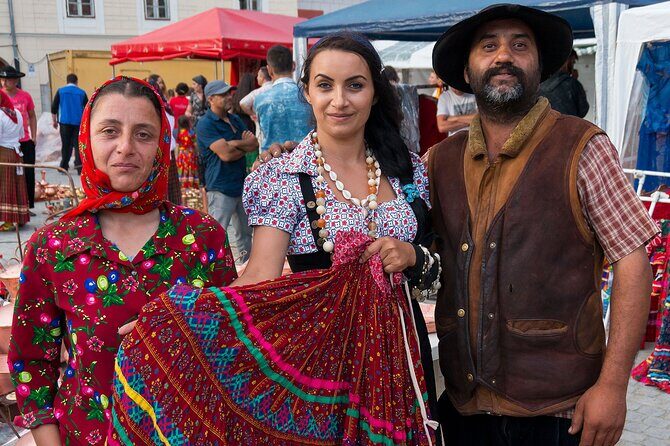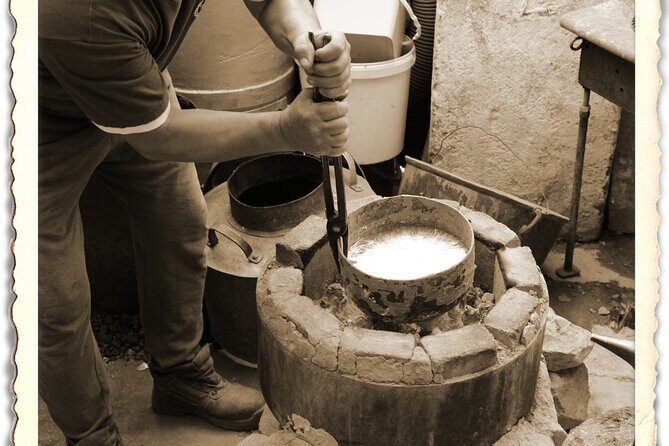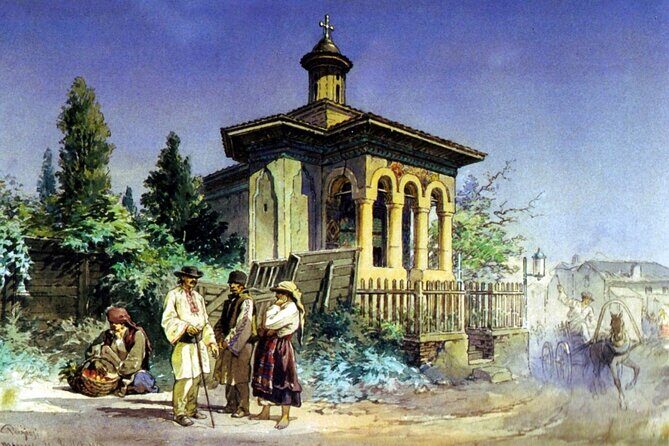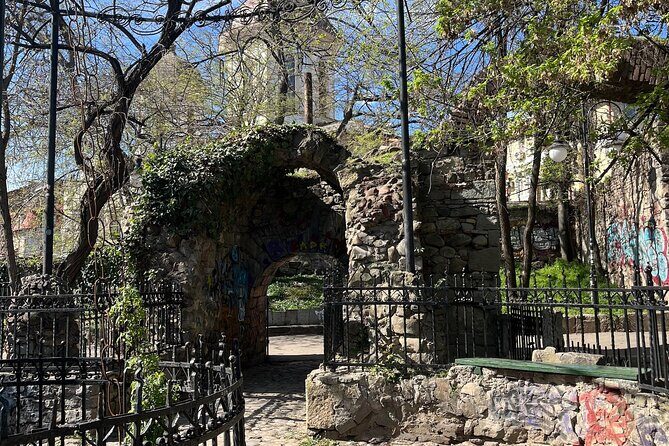Discover the Untold Stories of Romania’s Roma Community

If you’re curious about Romania’s past and how it shapes its present, The Real Story of Gypsies – Slavery in Romania tour offers a captivating look into the history of the Roma people. For just under $30, you’ll spend about three hours walking through Bucharest’s streets, visiting significant sites like Romana Square, Cismigiu Park, and even a Holocaust memorial. The tour promises a blend of serious historical insight, cultural stories, and moments of lightheartedness—something for every traveler eager to understand the nuances of Romania’s diverse society.
What we love most is how this tour balances historical context with personal stories, making the experience both educational and emotionally resonant. Plus, the visit to Mesteshukar ButiQ at the end is a real highlight—here, you can see authentic Roma craftsmanship firsthand, giving a tangible sense of resilience and tradition.
A minor consideration is that the tour covers a broad range of topics and sites in just three hours, so some stops might feel like quick glimpses rather than deep dives. Still, if you’re interested in authentic narratives beyond the usual tourist spots, this tour is a great choice.
This experience suits travelers who appreciate history with a human touch, are interested in social issues, and enjoy seeing a city from a different perspective. It’s especially valuable if you want a meaningful, well-organized walk that connects Bucharest’s landmarks to larger stories of identity, oppression, and culture.
Key Points

- Authentic storytelling brings Romania’s Roma history to life through vivid sites and stories.
- Cultural encounters include an artisan shop showcasing traditional craftsmanship.
- Balanced approach combines somber memorials with lively narratives and interesting facts.
- Accessible and well-organized for most travelers, with a small group size enhancing engagement.
- Educational value extends beyond sightseeing, enlightening on complex social issues.
- Affordable price offers a deep, meaningful experience without breaking the bank.
Planning more time in Bucharest? We've covered other experiences worth considering.
A Deep Dive into the Tour Experience

The Starting Point: Romana Square and the Old Slaves Market
Our journey begins at Teatrul Ion Creang, a central hub in Bucharest, where Mihai, our guide (according to reviews), immediately sets a welcoming tone. The first stop is at Platoul Piata Amzei, on the site of an old slaves market. Here, we learn about a dark chapter in Romania’s past—how human lives were traded and the long-lasting effects on the Roma community. The site is a stark reminder, and the story told here creates an emotional anchor that helps frame the tour’s deeper messages.
We appreciate how the guide mixes facts with storytelling, making history accessible and personal. As one reviewer noted, Mihai was “very informative, willing to answer questions,” which is crucial for a topic this sensitive.
Palatul Stirbei: Architecture with a Story
Next, we stroll past Palatul Stirbei, built in 1835. While it’s a beautiful example of Bucharest architecture, it’s also linked to pivotal moments in Roma history—though the details are woven into the story rather than explicitly highlighted. This building is a visual cue that history is layered—architecture, politics, and social change all intertwined.
The Romanian Athenaeum: Culture and Perception
Our walk continues past Ateneul Roman, one of Bucharest’s most recognizable landmarks. As we approach, the conversation shifts to how art and culture influence perceptions of the Roma. The Athenaeum symbolizes national pride, but it also prompts us to think about how Roma culture has been represented—or misrepresented—in Romania’s artistic expressions.
Many visitors find this a compelling moment. The sight of such a grand building, coupled with reflections on cultural identity, adds depth to the tour.
Relaxing in Cismigiu Park
The next stop is Cismigiu Park, Bucharest’s oldest garden. Here, we’re encouraged to enjoy the greenery and tranquility, which offers a respite from the more intense historical sites. According to reviews, this park is a favorite for its lush scenery and “stunning views,” giving us a chance to reflect on what we’ve learned and absorb the city’s quieter, natural side.
Honoring Victims at the Holocaust Memorial
A somber but vital part of the tour is the visit to the Holocaust Memorial, where we pay respects to thousands of Roma lives lost during persecution. This site underscores the brutal realities faced by the Roma during the 20th century. The stories shared here are powerful, and the memorial provides a space for reflection. One traveler called the experience “very satisfactory,” appreciating the respectful approach and meaningful storytelling.
Iuliu Maniu Statue: Remembering Important Moments
Continuing along, we visit the Iuliu Maniu Statue, highlighting another chapter in Roma history—when they were still commonly called “Gypsies.” This stop provides a glimpse into how identities and labels have evolved over time, adding another layer of understanding to the tour’s overarching narrative.
End at Mesteshukar ButiQ: Craftsmanship and Resilience
The tour concludes at Mesteshukar ButiQ, a shop showcasing authentic Roma craftsmanship—particularly copperwork. Here, we see artisans at work, their skills passed down through generations. The reviews praise this segment as “a vibrant world of craftsmanship,” and it’s a reminder of the resilience and cultural pride that continue despite historical hardships.
You’ll love the chance to see real handmade items and perhaps pick up a unique souvenir that tells a story of tradition and perseverance.
Practical Details and What You Can Expect
The tour starts at 12:00 PM from Teatrul Ion Creang and lasts around three hours, covering approximately 1 hour and 20 minutes of walking. The group size is limited to 15 travelers, making it intimate enough for questions and personal engagement, which many reviews highlight as a plus.
The price of around $29 is quite reasonable, especially considering the depth of content and the variety of sites visited. Since all stops are free of charge, the cost mainly covers your guide’s expertise and the unique insights you gain. The final visit to Mesteshukar ButiQ is a great way to support local artisans and bring home a meaningful keepsake.
You’ll find this tour ideal for history enthusiasts, cultural explorers, or anyone wanting a more nuanced understanding of Bucharest’s social fabric. It’s particularly suited for travelers who prefer stories over superficial sightseeing and are open to confronting difficult parts of history alongside moments of culture and craftsmanship.
The Sum Up
This walking tour offers more than just sightseeing; it’s an educational journey that takes you through the layers of Romania’s past and present concerning the Roma community. With a knowledgeable guide, a balanced mix of somber and lively stories, and the chance to see local craftsmanship, it’s a meaningful experience that highlights resilience amid adversity.
While the journey is quick and covers a lot of ground, it’s designed to give you a broad yet personal picture of a complex social story. The small group size and articulate storytelling make this an immersive experience, especially for those interested in social issues, history, and cultural traditions.
If you’re seeking a tour that combines heartfelt stories, significant landmarks, and a chance to support local artisans, this is a highly worthwhile addition to your Bucharest itinerary. It’s especially recommended if you want to see the city through a lens that acknowledges its struggles and triumphs—a perspective often missing from standard sightseeing.
FAQ

How long is the tour?
The tour lasts approximately 3 hours, including about 1 hour and 20 minutes of walking and the stops at key sites.
Where does the tour start and end?
It begins at Teatrul Ion Creang in Piaa Amzei and ends at Mesteshukar ButiQ on Bulevardul Mihail Koglniceanu.
What is the group size?
The maximum group size is 15 travelers, ensuring a more engaging and personalized experience.
Is the tour suitable for all travelers?
Most travelers can participate, and it’s accessible for those who enjoy walking and cultural storytelling. It’s especially good for curious minds interested in history and social issues.
How much does the tour cost?
The cost is $29.09 per person, which includes all the storytelling, site visits, and a chance to explore the artisan shop at the end.
Are there any additional costs?
No, all major sites visited are free of charge, but you might want to purchase artisan products at Mesteshukar ButiQ.
Is there a cancellation policy?
Yes, you can cancel up to 24 hours in advance for a full refund—great for flexibility if your plans change.
In summary, this tour offers a thoughtful, well-paced look at a difficult but vital part of Romania’s journey—perfect for travelers who want to go beyond the usual sights and understand the stories that shape Bucharest today.
More Tour Reviews in Bucharest
More Bucharest experiences we've covered
- 3-Day Private Tour of Medieval Transylvania from Bucharest
- Private Guided Panoramic Tour in Bucharest by Car
- VIP Party in Bucharest
- Dracula Private Tour
- Private Tour: 4-day Transylvania Famous Landmarks
- The Real Dracula’s Castle in Targoviste and Dracula’s Tomb
- Private Walking Tour of Communist Bucharest
- Peles & Cantacuzino Castles: Gourmet Wine & Cultural Day trip
- Bucharest Highlights: Parliament, Ceausescu House, Village Museum
- Bucharest Airport Private Transfer
- Bulgaria Day Trip: Private Tour from Bucharest
- Private Bucharest Pub Crawl
